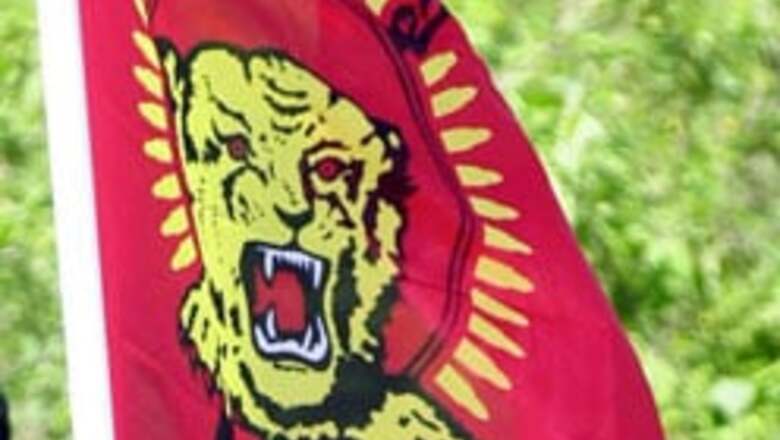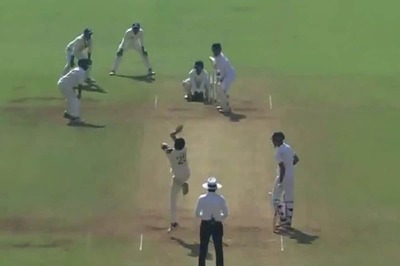
views
Colombo: Around 15-20 Sri Lankan sailors were feared dead on Thursday after their fast attack boat was sunk by Tamil Tiger rebels in the worst military confrontation since a 2002 ceasefire, military sources said.
Nordic truce monitors said their officials saw two Israeli-built navy Dvoras sunk by rebels during the clash off the island's northern tip, but military officials could confirm only one boat sank.
"There were 15-20 navy personnel aboard. They are feared lost," said a senior military official, asking not to be named.
He said the military had sunk three of a 15-strong rebel flotilla and damaged four other vessels.
The air force bombed rebel territory following the naval battle.
The air force scrambled fighter jets and helicopter gunships to the, officials said. "The air force has bombed our territory, but nothing has fallen here," rebel media coordinator Daya Master told Reuters from Kilinochchi town. "We have no word on casualties yet."
Local aid workers in Kilinochchi said they had heard one loud explosion nearby.
The naval battle was around 30 miles away from the Liberation Tigers of Tamil Eelam's northern stronghold. There was no word on fatalities. "Our monitors saw several Tiger boats attacking the transporter ship and firing," said Helen Olafsdottir, spokeswoman for the unarmed Sri Lanka Monitoring Mission. "We have a monitor on that boat."
Military officials said 710 troops were aboard the transporter, which had sustained light damage and moved to shelter in Indian waters after the confrontation.
Olafsdottir said two of the government's Israeli-built fast attack boats had been sunk. At least one sailor was wounded by gunfire, but Olafsdottir had no further details.
The Tigers, who are fighting for a separate homeland for ethnic Tamils in the north and east, have withdrawn from peace talks indefinitely, warning ominously on Tuesday that Sri Lanka was moving towards the "fringes" of war.
In a separate incident in the island's restive eastern district of Trincomalee, the military said rebels had fired mortars and bursts of gunfire at a navy post, but that no one had been hurt.
The violence comes after a rash of attacks in April, one of the bloodiest months of the island's four-year ceasefire, and just a day after a Japanese peace envoy left the island after an abortive bid to coax the Tigers to return to peace talks.
Bombings and land and sea clashes have killed more than 200 people in the past month. More people were killed in April than during many periods of the war itself, when attacks were often sporadic and followed by weeks of little activity.
The Tigers and the majority-Sinhalese government each accuse the other of ethnically-motivated attacks. Truce monitors said on Thursday they believe Sri Lankan troops are involved in killing civilians from the ethnic Tamil minority in the island's north, which the government and military deny.
Many ordinary Tamils in the northern army-held enclave of Jaffna -- which the Tigers regard as their homeland and ultimately want back -- fear they may have to flee their homes and rebuild their lives all over again.
"I know some people who are packing their bags ready to move away if war starts again," said 52-year-old Jaffna resident Jacob Rajasingham, who makes a living hiring out his car and a minivan and was forced to flee Jaffna ahead of an assault in 1995.
"I dread to leave the house because of the fear and tension," he added. "Perhaps I should pack my bags too."



















Comments
0 comment